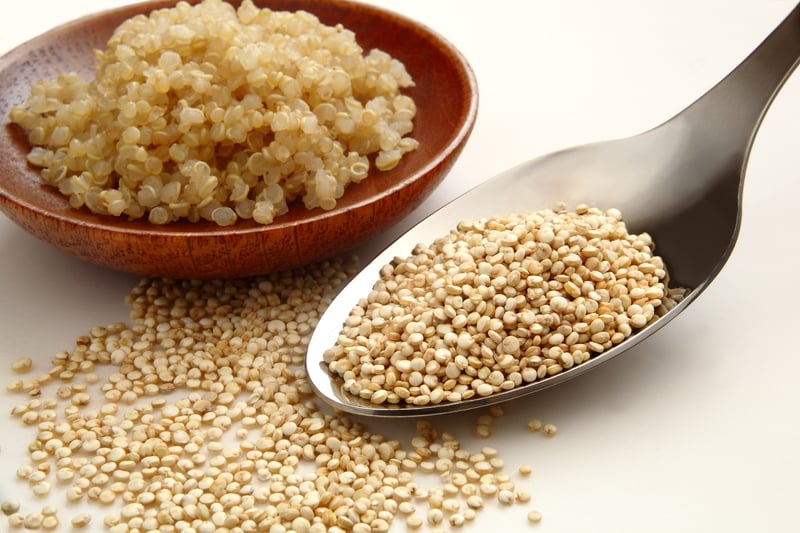The Best High-Fiber, Low-Carb Foods You Need in Your Diet

Despite the many complaints about “dieting,” you don’t have to miserable if you’re trying to lose weight! There are a lot of high-fiber, low-carb foods you can keep in your diet plan that are delicious and filling. And beyond helping you lose weight, a low-carb diet filled with high-fiber foods can go a long way toward improving your overall health.
Why You Should Try a High-Fiber, Low-Carb Diet?
Low-carb diets have been around for a while and even become somewhat of a movement. But it’s more than just a fad. Turns out, not only do low-carb diets provide you with great weight loss, but with the added tweak of high-fiber dietary choices, there are some other valuable benefits as well. These include:
- Blood sugar control—since carbs are converted by the body into sugar and deposited into the bloodstream to be used for energy, it stands to reason that the less carbs you provide, the better your control over your blood sugar will be. Add high-fiber foods to the equation, and you’ll have even better control over your glucose levels.
- Stay full longer—eating fiber-filled foods will help you feel full faster. And the fiber you eat will help you eat less because you’ll feel satisfied with smaller portions. Not only that, but fiber will give your foods “substance,” so you won’t feel deprived if dieting.
- Lose weight quickly—because carbs cause your body to hold onto water, reducing your carb intake will naturally have you shedding the water weight. In addition, ingesting fewer carbs means your body will have to tap into fat stores for its fuel needs, leading to greater weight loss. Fiber is also known as “nature’s broom” as it can help sweep fat and toxins right out of your system.
- Improve your blood lipids—adding fiber and tapering down the carbs will go a long way toward improving your triglycerides. Studies show that getting between 25 and 38 grams of fiber a day can significantly lower your cholesterol levels, leading to a potentially healthier system overall (and, perhaps, lower levels of medications if they’ve already been prescribed).
- Keep your gut happy—a happy gut means better health overall. When you get plenty of fiber, you allow the beneficial microbes that inhabit your gut to flourish. This means better bowel movements, less bloating, easier weight loss, a stronger immune system, and a lowered risk of colorectal cancer.
How to Truly Count Carbs
When it comes to counting carbs, there is a secret you can employ, and you’ll see how it’s extremely beneficial when you’re eating high-fiber, low-carb foods. As with a lot of diets, you’re likely counting calories and probably at least carbohydrates. Well, did you know that there’s something called “net carbs”?
It all boils down to the fiber content. Fiber comes in handy when you’re counting carbs because your body cannot digest fiber. (Our bodies lack the enzymes necessary to digest this substance.) So, what’s the formula when calculating the content in high-fiber, low-carb foods?
Total Carbs – Grams of Fiber = Net Carbs (the only ones your body can process)
For example, if you ate a cup of strawberries that contained 10 grams of carbohydrates and 2 grams of fiber, you would subtract the 2 grams of fiber from the total carbs for the net carbs of 8 grams.
Remember this formula when calculating the carb content in your foods. Fiber really is your best friend!
Add These High-Fiber, Low-Carb Foods to Your Diet
Here’s the list you’ve been waiting for… the best foods to choose if you want to get plenty of fiber but still want to keep it low carb:
1. Veggies
Fibrous vegetables can be your best friend when you’re looking to add high-fiber, low-carb foods to your diet. Keep starches low and opt for veggies like cucumbers, green beans, broccoli, mushrooms, cauliflower, Brussel sprouts, asparagus, cabbage, celery, and radishes.
2. Leafy Greens
Think darker lettuce varieties, like spinach, kale, Swiss chard, and collard greens.
3. Fruits
Most fruits contain a healthy amount of fiber, but be careful to choose fruits that are lower on the carbohydrate spectrum like blueberries, strawberries, raspberries, and blackberries.
4. Seeds
These little gems can pack a punch when it comes to giving any meal a nice boost in fiber. Try adding chia seeds, sesame seeds, pumpkin seeds, flax seeds, and sunflower seeds to your meals or just have them as a healthy snack.
5. Nuts
Believe it or not, some nuts contain a lot of fiber as well. Just be sure to watch the calorie and fat content because they can sneak up on you quickly when snacking on nuts. Include almonds, pistachios, macadamia nuts, pecans, peanuts, and hazelnuts in your diet for their filling fiber, healthy fats, and protein.
6. Whole grains
Eating whole grains like quinoa, barley, and steel-cut oatmeal can help satisfy your appetite and your fiber needs. While relatively low carb, it’s still important to watch overall portion sizes, or the carbs and calories can add up.
7. Squash
Believe it or not, you have some great high-fiber, low-carb squash options to round out the list. Opt for the lower carb squashes like pumpkin, spaghetti squash, and butternut.
Of course, if losing weight is your goal, you still have to ensure you are in a calorie deficit. So, fuel your body with plenty of satiating protein and don’t forget to add more activity and regular exercise to the plan.




 7 Signs Your Body is Seriously Low on Collagen (not just wrinkles)
7 Signs Your Body is Seriously Low on Collagen (not just wrinkles) Health Expert: "Turmeric Doesn't Work (unless...)"
Health Expert: "Turmeric Doesn't Work (unless...)" 3 Warning Signs Your Probiotic Supplement is a Total Waste
3 Warning Signs Your Probiotic Supplement is a Total Waste

